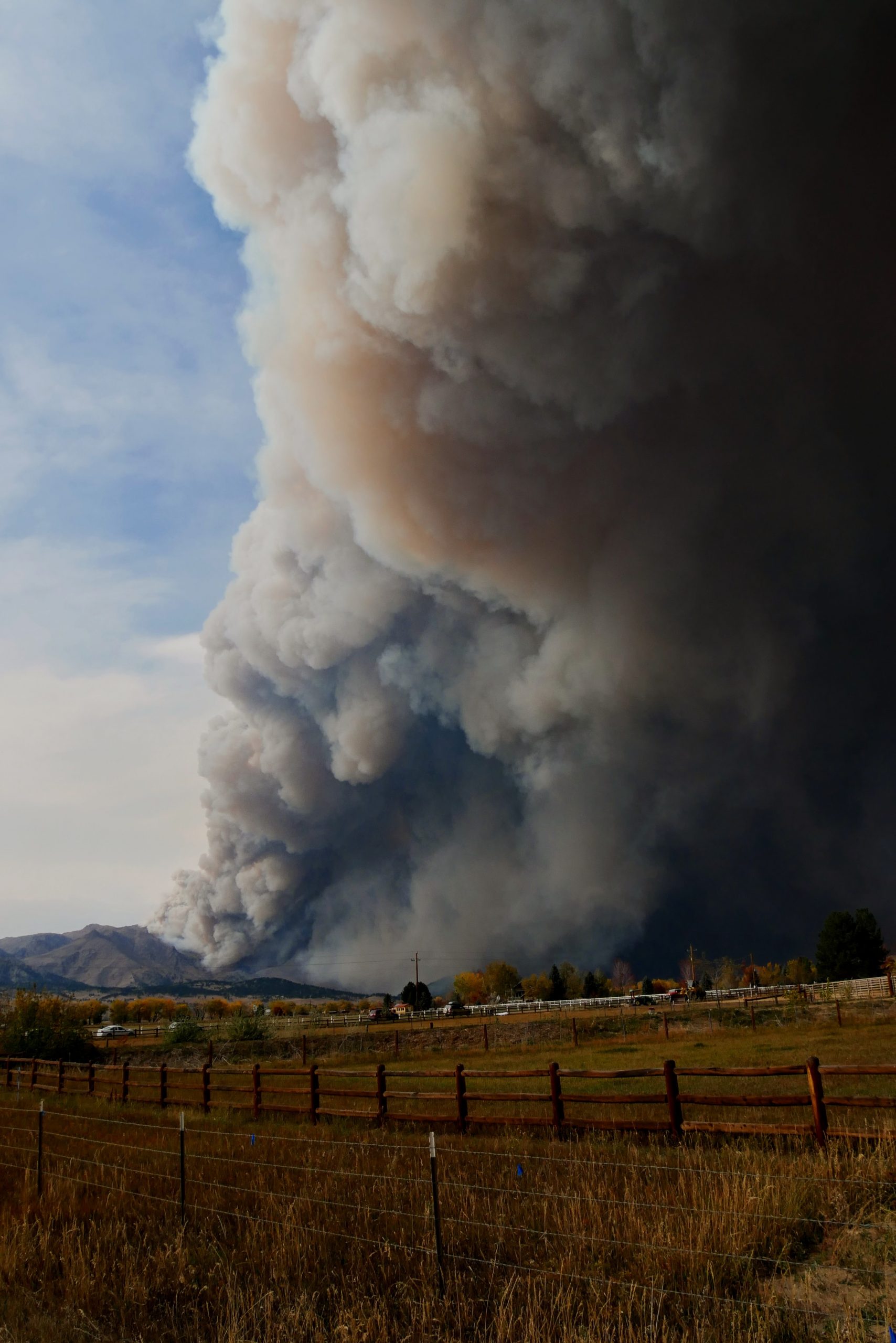The average number of days with exposure to very high or extremely high fire danger was higher in 2019-2023 than 2003-2007 for 124 (66%) countries 1 12024 Report of the Lancet Countdown
Explore health-relevant side events, news and resources from the 2025 UN Climate Conference.
Health at COP30 >Hotter and drier conditions caused by climate change are resulting in bigger, more frequent, and longer-lasting wildfires. As a result, more people – including urban populations far from the fire sites – are being exposed to harmful and prolonged levels of wildfire smoke.
The health impact of a fire depends on its size, speed and proximity to populations, and whether there is sufficient advanced warning to evacuate. Air pollution resulting from fires can cause a range of health issues, including respiratory and cardiovascular problems. Wildfire smoke is a complex and toxic mix of chemical compounds that range from fine particles to precursors of ozone, with potentially harmful effects on health.
Wildfires can also disrupt transportation, communications, power and gas services, and water supply. They lead to a deterioration of air quality, and loss of property, crops, resources, animals, can cause injuries and death, and may impact the mental health and well-being of those affected.

The average number of days with exposure to very high or extremely high fire danger was higher in 2019-2023 than 2003-2007 for 124 (66%) countries 1 12024 Report of the Lancet Countdown
Every year, an estimated 339,000 people die worldwide as a result of wildfire smoke.2 2WHO: Wildfires
Wildfires are any unplanned or uncontrolled fire affecting natural, cultural, industrial and residential landscapes.3 3FAO, 2010. FAO Term Portal: Collection: Fire Management (A10.6)/CSCM. Food and Agriculture Organization of the United Nations (FAO) via UNDRR/ISC Hazard Information Profiles: Supplement to UNDRR-ISC Hazard Definition & Classification Review: Technical Report
![]()
Beyond fatalities, wildfires and the resulting smoke and ashes can cause:
Wildfires occur in all vegetation zones across the world, but occur most often where droughts and heat waves occur. Fires can spread rapidly, covering extensive areas and inflicting severe damage to homes and the environment.
Wildfire smoke can travel far distances and affect areas that are not directly exposed to the fire event, and may affect large numbers of people for days to months.5 5Health impacts of wildfires. Finlay et al. 2012 The regions most affected by deaths related to wildfire smoke include sub-Saharan Africa, South America and Southeast Asia. 6 6Estimated global mortality attributable to smoke from landscape fires. Johnston et al. 2012
Extratropical regions, including the Pan-Arctic, have also experienced an increased number of fires in the last two decades. 7 7Estimates of temporal-spatial variability of wildfire danger across the Pan-Arctic and extra-tropics. Justino et al 2021
DIRECT IMPACTS
Those unable to escape the path of a wildfire may suffer burns, injuries or death, but wildfires primarily impact health through exposure to smoke. Health impacts increase in step with incremental increases in air pollution, and are seen especially in children, the elderly, and those with existing chronic medical conditions.
Wildfire smoke is a mixture of air pollutants, of which particulate matter is the main health threat. These very fine particles can go deep into the lungs and, by themselves or in combination with other air pollutants, can exacerbate pre-existing diseases of the heart and lungs.
Smoke can produce large amounts of carbon monoxide, carbon dioxide, nitrogen oxides, ozone and particulate matter, both coarse and fine (PM10 and PM2.5). It is these substances that negatively impact human health, and these health impacts are often long-term.
Even modest rises in pollution levels can cause major health impacts in a population if enough people are exposed or the smoke persists for a long time.
INDIRECT IMPACTS
The indirect impacts of fires also affect health through the destruction of livelihoods and property as well as population displacement, which can negatively impact mental health and the provision of healthcare services. Forest fire smoke and fire retardant dropped by planes and helicopters can also pollute domestic water tanks and waterways with ash and particulates.
The size and frequency of wildfires are growing due to climate change. Hotter and drier conditions are drying out ecosystems and increasing the risk of wildfires. The risk of wildfires increases in extremely dry conditions, such as during droughts and periods of high winds.
As a result of bigger, more frequent, and longer-lasting fires, larger populations, including urban populations far from the fire sites, are being exposed to harmful and prolonged levels of wildfire smoke. 8 8The Limits of Livability – The emerging threat of smoke impacts on health from forest fires and climate change. GCHA, 2021
Wildfires also simultaneously impact weather and the climate by releasing large quantities of carbon dioxide, carbon monoxide and fine particulate matter into the atmosphere. 9 9WHO: Wildfires
The magnitude of the physical and human costs from wildfires can be reduced if adequate emergency prevention, preparedness, response and recovery measures are implemented in a sustainable and timely manner.
Long term interventions:
Emergency actions:
Research
EN
Research
EN
Research
EN